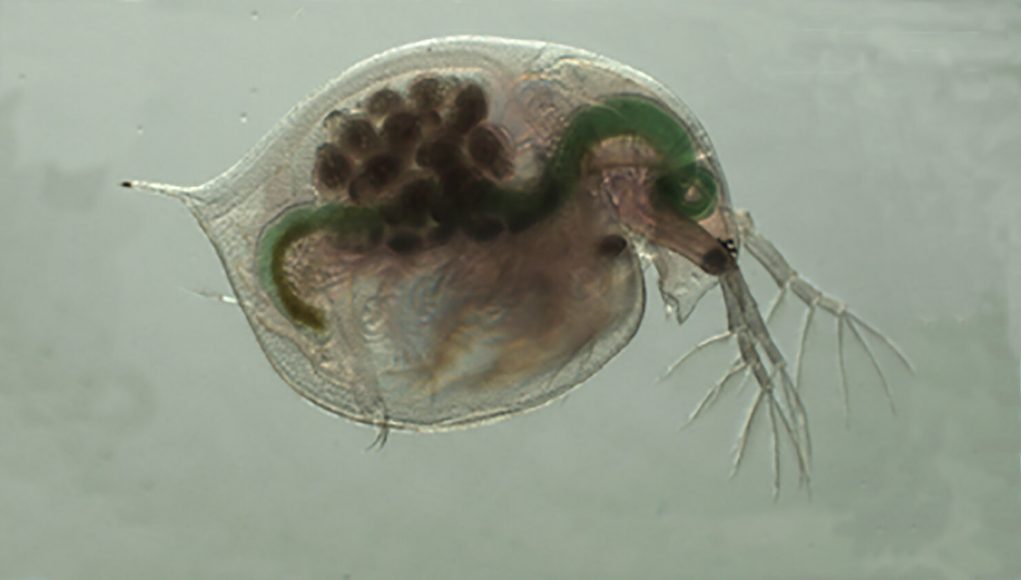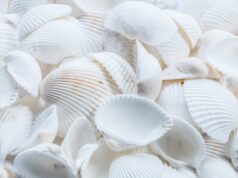Researchers from North Carolina State University have shown that the E75 protein is a key regulator of some biological rhythms through interactions with nitric oxide. Suppression of E75 results in longer molt cycles and reduced numbers of offspring in the water flea, Daphnia magna. The work also raises questions about the ability of nitric oxide from environmental sources to disrupt biological rhythms that are critical to population sustainability.
Gerald LeBlanc, professor of biology at NC State and corresponding author of a paper describing the work, was interested in the role that environmental cues played in regulating biological rhythms using Daphnia magna as a model organism.
Daphnia magna, or the common water flea, is a crustacean found in most freshwater ponds in North America. The water flea is not only a keystone species—important for the maintenance of food webs in these ecosystems—it is also a lab model for crustaceans more generally.
“We are looking at how biological rhythms regulate physiological processes,” LeBlanc says. “How does an organism know when to molt? Or when to migrate? Many rhythms are based on environmental cues; for example, our own circadian—or sleep cycle—is based in part on experiencing light and dark. But are there similar environmental cues that regulate longer rhythms—and if so, what effect might environmental stressors have on them?”
LeBlanc and his team targeted a protein, E75, known to play a role in regulating some biological rhythms. Nitric oxide, a short-lived hormone and potent signaling molecule, inhibits E75’s activity. The researchers exposed daphnids to the nitric oxide-generating compound sodium nitroprusside, which disrupted the molecular cascade that leads to molting and increased the length of the molt cycle. They then established that direct suppression of E75 using RNA interference produced similar results. Not only did suppression of E75 lengthen the molt cycle but it also reduced the number of offspring produced.
Find your dream job in the space industry. Check our Space Job Board »
“Water fleas produce nitric oxide naturally,” LeBlanc says, “but they can also take up nitrogenous compounds from their surroundings and convert them into nitric oxide. E75 is the first domino in the molt cycle, and a critical regulator of molting and reproduction, since they are coordinated in water flea. We show that nitric oxide can disrupt the rhythm, thereby disrupting growth, time to reproductive maturation and fecundity. The consequences of such a disruption over time could be devastating to the population.
“We also know that the molt cycle is regulated by environmental cues. It is possible that nitric oxide is the environmental modulator, in which case environmental sources of nitrogen—such as fertilizer runoff—could fool the animal and disrupt the population. These are questions we would like to explore in the future.”
Provided by: North Carolina State University
More information: Stephanie M. Street et al. The role of nuclear receptor E75 in regulating the molt cycle of Daphnia magna and consequences of its disruption. PLOS ONE (2019). DOI: 10.1371/journal.pone.0221642
Image: Daphnia magna, the water flea.
Credit: North Carolina State University











